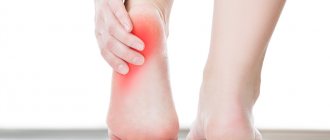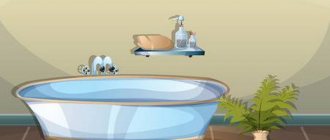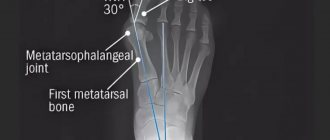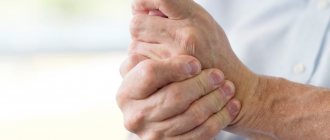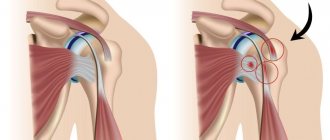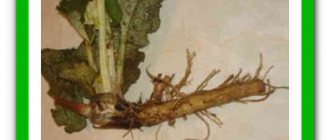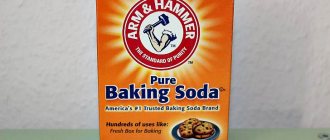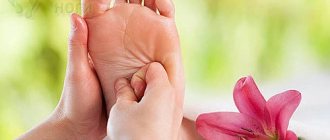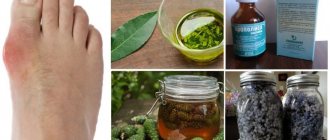Orthopedics Symptoms Services and prices Specialists Diseases
A corn is the accumulation and growth of compacted skin tissue, which manifests itself as a result of the excessive production of epidermal cells. These pathological changes occur due to damage to the skin and subcutaneous tissues. The main factor in violating the integrity of the skin is considered to be compression, which occurs due to inadequate distribution of the load on the human foot. Causes of corns formation
The formation of corns is associated with excessive growth and accumulation of dead skin cells on the foot due to compression of the foot and its repeated mechanical irritation.
The main causes of corns:
- wearing the wrong shoes;
- increased physical activity;
- overweight.
Wearing improperly fitted shoes
When you step, the foot is the first to bear the load, supporting the weight of the entire body. In this case, the heel takes on the load of about eighty percent of the total weight of the human body. The toe accounts for about twenty percent of the body weight. When wearing shoes with heels measuring more than eight centimeters, the load on parts of the foot changes in the opposite direction. In this case, excessive pressure on the toe causes the metatarsal bones to spread apart and, under the weight of the weight, crush the skin against the sole of the shoe. Due to prolonged pressure on the toe, skin cells begin to multiply and divide excessively, subsequently forming a corn.
Also, the formation of corns can be due to prolonged wearing of shoes with narrow toes. At the same time, tight shoes, pinching the toes, mechanically deform the transverse arch of the foot.
Increased physical activity
Often, corns occur in people whose profession requires them to lead an active lifestyle. These could be athletes who spend most of their time in competitions and training, or military personnel who walk on the parade ground every day.
Overweight
Excessive human body weight puts constant stress on the feet. Under the influence of excess weight, the arch of the foot flattens, and such people develop flat feet, which causes constant friction between the skin and shoes when walking. Regular friction, as well as excessive pressure placed on the feet, leads to the fact that certain areas of the skin of the foot become rough and grow, manifesting themselves in the form of corns.
Causes
The main reason for the formation of corns on the soles of the feet is an excessive accumulation of dead cells due to repeated mechanical damage and compression. Among the factors contributing to the development of the disease:
- Wrong selection of shoes. During walking, the heel takes on about 80% of the total load, the toe – about 20%. If a woman wears high-heeled shoes, the load is distributed in the opposite direction - more pressure is placed on the toe. As a result, the bones are flattened: they seem to spread out and put pressure on the skin. The pathological process of rapid division of skin cells starts. Shoes with narrow toes also have a negative impact on the condition of the feet. It pinches the fingers and promotes mechanical deformation of the transverse arch. Changing the shape of the foot, in turn, leads to the fact that the load is distributed unevenly.
- Excess weight. Excess body weight means a constant increased load on the feet. Over time, the arch flattens and flat feet form, causing the skin to constantly rub against the shoes. Certain areas become rougher and grow larger.
- High physical activity. Corns on the feet are often diagnosed in people who lead an active lifestyle. This refers to athletes and military personnel. Frequent and prolonged walking or running makes the skin of the feet very rough, which leads to the appearance of corns.
Other causes of corns include:
- foot hyperhidrosis;
- flat feet;
- Morton's deformity;
- circulatory disorders in the lower extremities,
- diabetes;
- mycoses of the feet;
- avitaminosis;
- rheumatoid arthritis.
Cryodestruction
Cryodestruction involves exposing a corn or callus to liquid nitrogen. At a temperature of -196 degrees, the keratinized tissue dies.
Advantages and disadvantages of this type of removal:
- Speed – the procedure lasts from 30 seconds to 2 minutes.
- Painlessness - the only thing you can feel during the procedure is a slight cold. No anesthesia is required.
- Cryodestruction can be performed on children and adults.
- Low risk of infection - dead tissue will begin to peel off within 2-3 days after the procedure. Once the scab falls off, there will be a new layer of skin underneath.
- Cryodestruction does not involve any injuries - under the influence of liquid nitrogen, the vessels are “sealed”, so the risk of various bleedings is eliminated.
- No scars after healing.
The only disadvantages that can be highlighted are the unpleasant sensations during the rehabilitation period.
In addition to all the advantages, this procedure also has contraindications:
- intolerance to low temperatures (which is extremely rare);
- reducing corns on a large area of skin. When there are several large corns on the foot next to each other, and they merge into one, then cryodestruction is impossible, since such a wound will heal for a very long time.
After the callus is removed, wound healing creams are usually prescribed, as well as wearing a special patch to prevent the recurrence of calluses. The procedure is performed only in a clinic by a dermatologist. Prices in different regions range from 700 rubles. up to 2000 rubles, which makes the procedure relatively affordable.
Don't miss the most popular article in the section: Laser hair removal on the face and body - how it is done, effectiveness, before and after photos, contraindications.
Symptoms of corns
Corns on the feet appear:
- changes in skin structure;
- swelling of the inflamed area;
- redness;
- yellowish or whitish skin tone;
- pain while walking;
- decreased pain and tactile sensitivity.
Corns can be flat or raised, smooth or rough to the touch. Most often they form on the balls of the feet, under the toes, and on the heel. Not only the corn itself hurts, but the entire foot.
If you experience similar symptoms,
consult your doctor . It is easier to prevent a disease than to deal with the consequences.
Difference from warts and calluses
Calluses are distinguished by a cone-shaped shaft and clear boundaries. Wet blisters with liquid appear instantly. This is how the dermis protects the deeper layers. When friction occurs, the capillaries become damaged and then the contents of the blister are red in color. To avoid infection, they should not be opened. It's better when it happens naturally. The main thing is to immediately treat the affected area with furatsilin or hydrogen peroxide. During the day, the wound can be protected with a bactericidal plaster. Calluses are given at least 2-3 days to allow the skin on their surface to recover and heal. It is advisable to wear comfortable shoes.
If the friction does not stop, then the wet callus transforms into a dry callus, which already looks like a thick layer of dead cells. It is a “long-liver”, having a root that penetrates into deeper areas of the dermis. When nerve endings are touched, it is accompanied by pain. It is better to consult a doctor with such problems. If there is no pain, then it is usually corns.
Warts are viral in nature and require a different approach to treatment. They consist of living dermis, so when injured, blood flows from them. There is a different etiology for heel spurs.
Treatment of corns
Treatment of corns includes:
- use of keratolytic agents;
- preparing foot baths;
- sticking special patches against corns;
- wearing Japanese socks.
How to get rid of corns on feet using keratolytic agents
Keratolytic remedies for corns on the feet allow you to soften and dissolve the stratum corneum of the skin. They are available in the form of creams, patches and ointments. Usually contain lactic or salicylic acid, urea, etc.
Keratolytic creams for corns:
- “Healer” (vitamin E, urea, salicylic acid, celandine, tea tree oil, oak bark);
- “Super antimozolin” (salicylic acid, urea, perfume composition);
- “Namazol-911” (marjoram oil, salicylic acid, urea, tea tree oil);
- “Green Planet” (urea, Shea butter, nut and pine extract, juniper oil, lactic acid).
Ointments for corns on feet:
- "Arievicha" (lactic and salicylic acids);
- "Bensalitin" (benzoic and salicylic acids);
- "Compid" (based on hydrocolloid particles);
- "Salipod" (salicylic acid, sulfur).
Plasters for corns on the feet:
How to get rid of corns on the feet using baths
Treatment of corns on the feet at home can be carried out using baths. The procedure is recommended to be carried out every other day for one month. It is important to follow the rules:
- Wash your feet with soap first.
- The solution should not be hot.
- After the procedure, dry the skin with a towel and clean your feet with a special rough file.
- Finally, treat the skin with a softening cream.
Removal of corns can be carried out by preparing baths with the following compositions:
- Calendula. Calendula baths have an antiseptic and anti-inflammatory effect. They speed up the tissue healing process. Prevents the proliferation of fungi and viruses.
- Nettle. Foot baths with nettles are rich in B vitamins, potassium, ascorbic acid, and carotene. They perfectly stimulate local immunity, accelerate regeneration and have a pronounced anti-edematous effect.
- Baking soda + sea salt. Baths with sea salt and soda are designed to soften rough skin, making it easy to remove. They eliminate the feeling of heaviness in the legs and relieve inflammation.
- Chamomile. Chamomile baths make the skin smooth and elastic. They have an antiseptic and analgesic effect. Accelerate the recovery of injured tissues.
- Sage + oak bark. The composition protects the skin of the feet from bacteria, fungi, and eliminates excessive sweating.
How to treat corns on the feet with socks
Pedicure socks for removing calluses are a new product that makes the skin smooth. With their help, you can get rid of not only the described disease, but also calluses and cracks. The sock contains:
- plant extracts (sage, chamomile, calendula, etc.);
- oils (lemon, orange, grapefruit);
- Castor oil;
- malic acid;
- lactic acid;
- glucose;
- butylene glycol;
- distilled water.
Treatment of corns on the feet at home using socks allows you to achieve the following results:
- remove swelling;
- relieve inflammation;
- eliminate unpleasant odor;
- reduce the severity of hyperhidrosis;
- make the skin soft and prevent its further coarsening;
- destroy fungi.
The socks are easy to use. Need to:
- wash your feet (it’s also good to take a foot bath);
- open the packaging and carefully remove the products;
- open the socks by cutting off the upper part along the contour line;
- put them on your feet and secure with adhesive tape (included in the set);
- put on woolen socks on top;
- After two hours, remove the socks from calluses and corns and wash your feet with warm water.
After using the socks, the skin will begin to peel off.
Contraindications to the described procedure are:
- violation of the integrity of the skin (ulcers, abrasions, scratches on the feet);
- pregnancy period;
- allergy to the components included in the composition.
Surgical removal of corns
Surgical treatment is carried out only if conservative methods do not bring the required result, the patient experiences severe pain while walking. You also need to remember that if the problem is caused by transverse flat feet, no operation will get rid of it.
Laser treatment of corns
When a laser beam is applied to the skin of the foot, dead cells are evaporated. The surrounding healthy tissues are not affected. The procedure is painless and is performed under local anesthesia. It usually takes from 5 to 10 minutes.
Radio wave treatment
The radio wave method of treating corns is a non-contact incision of soft tissue using radio frequency waves. Before intervention, an anesthetic medication is injected into the surface of the formation. Then, using a surgical electrode, the doctor gradually removes the entire keratinized area. During the procedure, the patient usually feels warm.
Which doctor should I contact?
If corns appear, you should consult an orthopedist. In some cases, it takes some time to find out the root cause of the appearance of calluses (for example, get tested or visit additional specialists).
Therefore, to relieve pain, the doctor may temporarily prescribe:
- anti-callus patch;
- keratolytic cream.
In the most advanced cases, the doctor prescribes surgical removal of the corn.
During the operation, the surgeon desiccates only the damaged part of the tissue, removing the rod.
Prevention
- The easiest way to avoid the appearance of corns on your feet is to buy quality shoes. Avoid overly narrow toes and high heels.
- It is also necessary to undergo an examination by an orthopedist-traumatologist once a year. It will help prevent the development of flat feet, which often leads to the formation of corns.
- Once a week you should get a good pedicure using a special foot file. Foot baths with plant extracts are very useful.
This article is posted for educational purposes only and does not constitute scientific material or professional medical advice.
Laser destruction
Calluses can also be removed using laser destruction. The procedure is painless, but unlike cryodestruction, this method involves the use of painkillers. The laser affects only rough skin without affecting healthy tissue. The recovery period takes several days.
In the early stages of the appearance of corns, laser removal is not required. This procedure is indicated for the appearance of core calluses, as well as infected, painful corns. If a person has poor circulation, there is a high risk of callus infection.
Such areas must be removed using laser destruction or another procedure recommended by a doctor. When laser removal occurs, dead cells are heated to high temperatures and, as a result, evaporated. If the callus or corns did not have a core, then after this procedure the skin will remain smooth and smooth. Otherwise, minor abrasions and wounds may temporarily remain on the foot.
The removal process takes no more than 2-3 minutes. After the procedure, the skin area is treated with disinfectants. The likelihood of calluses reappearing is zero.
Laser destruction has the following advantages:
- the risk of infection is eliminated;
- quick recovery period after the procedure;
- no bleeding;
- the ability to remove corns in 1 session;
- painlessness;
- no scars after healing;
- the risk of recurrence is reduced to zero.
There are only two disadvantages:
- a number of contraindications for this procedure (pregnancy, breastfeeding, diabetes, malignant tumors, low immunity);
- more expensive method compared to others.
For diabetes
The disease is worsened by the fact that due to dehydration, which is typical for diabetics, the skin becomes dry and prone to cracking. Knives and blades are contraindicated for removing calluses . Preference is given to pumice and brushes. In case of cracks, preventive measures must be taken:
- daily foot washing;
- use of moisturizers;
- change of socks and tights;
- ventilation and maintaining the dry inner surface of the shoe.
With the correct and timely choice of methods and means of combating corns, the skin of the feet will be well-groomed and smooth. The sooner treatment begins, the greater the chance of complete relief from the disease. Preventive measures will help maintain the skin of the feet in ideal condition, preventing the recurrence of calluses.
Compresses
Compresses and lotions are no less popular for removing corns:
- Lotions with aloe juice - apply a freshly cut aloe leaf to the corns overnight and secure it with an adhesive plaster. After waking up the next morning, you should carefully treat the problem area with pumice.
- Lemon lotions - before going to bed, you should steam your feet, then wipe them dry. At night, apply a piece of lemon with peel to the problem area. You need to repeat this action for 3-4 days. Then you need to steam your feet again and rub them with a pumice stone or a rough brush.
- Lotions with potatoes - you need to grate one potato on a fine grater. The resulting mass is wrapped in a piece of gauze and squeezed out a little. It should be applied to the sore spot at night. The next morning the skin will become pliable and the callus can be removed.
- Compress with onion - the peeled head is cut into half rings, then applied to the callus, a bag and a warm sock are put on top. The compress should be left until the morning. Then the skin is washed with warm water and the peeled skin is carefully removed with a pumice stone. After the procedure, it is recommended to moisturize the skin with cream.
- Compress with propolis – you need to soften the propolis, then apply it to the corns and wrap it with polyethylene. Put a warm sock over the bag. You need to wear the compress without removing it all day. Softened skin will be easy to remove after such a compress.
- Compress with celandine - the leaves of the plant need to be cleaned and ground in a blender. The resulting mixture is applied to the sore spot. Then wrap the foot in a plastic bag, put on a sock and leave it overnight. In the morning, wash your feet and rub problem areas with pumice. If the corns do not go away after the first application, you should repeat the procedure until they disappear completely.
How to remove with essential oils?
Essential oils are added to medicinal foot baths . It is possible to use them directly, directly affecting the callus. The following oils are suitable for solving the problem:
- calamus;
- oregano;
- sage;
- lavender;
- tea tree.
Before using the product, steam the feet until the corns soften. Then treated with oil. It is advisable to repeat the procedure every 6 hours.

